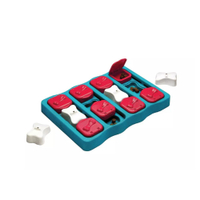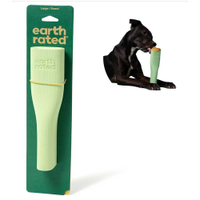Why is my dog play biting me? An expert reveals the reason and how to stop this
Wondering, ‘Why is my dog play biting’? We’ve got you covered in this comprehensive guide!
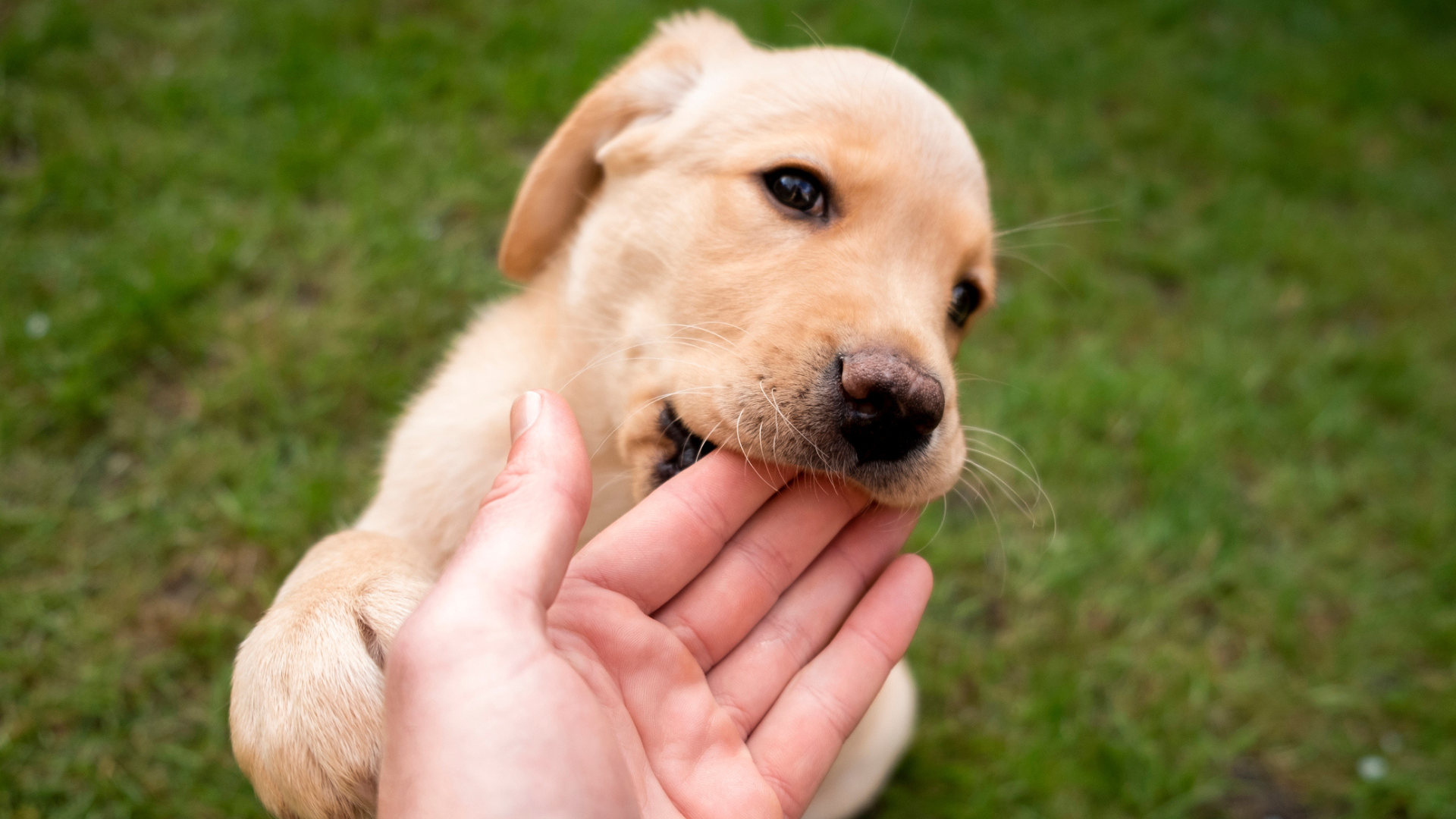
Dog play biting can feel worrying, especially if you don’t know how to stop it. Whether your pooch accidentally nips you during a game of tug, or grabs other dogs during play — it’s not fun for anyone!
Understanding why dogs may play bite is crucial for fostering safe interactions. Whilst play is a wonderful activity for dogs to socialize, exercise, use their brains, and as an outlet for natural breed traits, sometimes the excitement can get too much.
With an increase in arousal, even the most well-trained and sociable dogs can occasionally nip or bite. Several factors, including breed tendencies, individual temperament, past experiences, and the dynamics of the play situation, can influence this behavior. You might also be curious about your dog play barking.
As a certified animal behaviorist, specializing in dogs, I’m here to share some simple strategies to ensure enjoyable and risk-free playtime for both you and your dogs. Want to avoid future play biting? Read on to find out how.
Why is my dog play biting me?
We tend to focus on biting behavior in dog play fighting or real fights. However, many dogs also inappropriately use their teeth during playtime with their humans. There can be many reasons why this might happen, let’s take a look at some of them:
1. Overstimulation
Dogs, especially younger puppies or high-energy dog breeds, can become overly excited during play. When adrenaline increases, this can leave the dog in such a heightened state of arousal that they may lose control of their bite inhibition and nip harder than intended. Watching dog body language during play sessions can be useful to assess how aroused your dog is and whether it’s time to switch out to a more calming activity.
PetsRadar Newsletter
Get the best advice, tips and top tech for your beloved Pets
2. Accidental
Sometimes a bite happens accidentally, especially when using toys for a game of tuggy with your dog. If the toy is too short or you both try to grab the same part of the toy at the same time, an accidental nip may occur.
3. Lack of socialization or training
When dogs haven’t had the right sort of social interactions at a young age, they may not have had the chance to learn what appropriate play behavior looks like. Younger dogs need to be helped to understand how to interact with both other dogs and people.
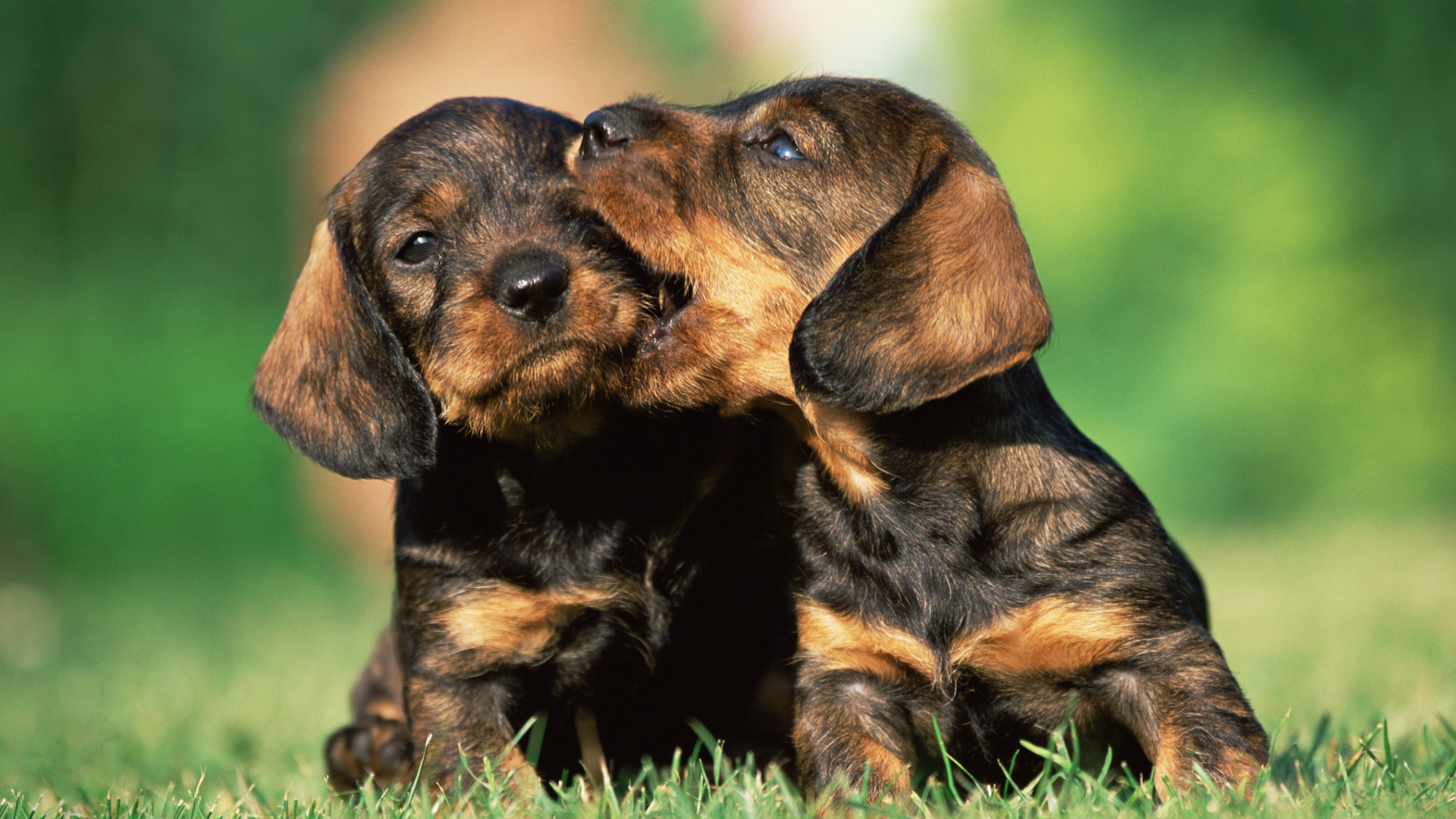
4. Resource related
Some dogs will be inclined to guard or protect certain items, and this can include toys you might use during play. Guarding behavior can be directed at both other dogs and humans, but not all dogs will guard or they may only guard against one species. Biting might happen as a resort to protect what they perceive as theirs.
5. Pain or discomfort
If a dog is in pain or discomfort, due to an injury or an underlying health issue, they may react aggressively during play if certain movements exacerbate this discomfort. Biting can be a way for them to communicate their discomfort or to stop a dog/human from continuing that part of play. If you see your dog suddenly starting to bite during play when it previously has never done so, it’s worth getting them checked out by your vet.
6. Prey Drive
High prey drive in dogs can manifest during play. Instinctive motivations can lead them to chase, nip, or bite during play, especially if the play mimics hunting behavior. Understanding what role your dog’s breed was created for can help you to see if there might be types of play that are going to be more - or less - appropriate for you to engage in together.
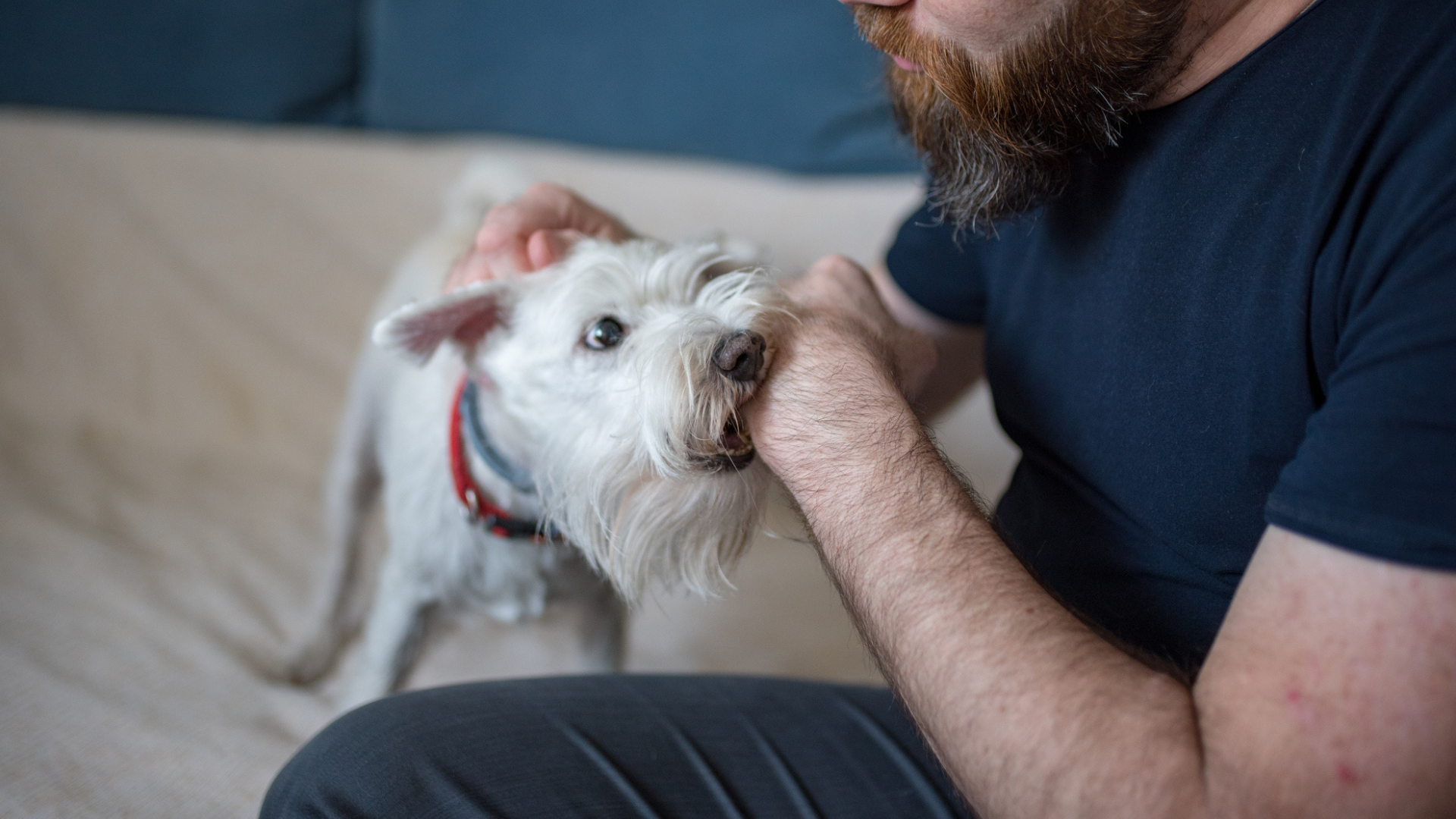
Is it normal for my dog to bite me while playing?
Play biting is a natural part of canine behavior. We see puppies learning about the world or playing with their siblings by using their mouths.
Starting with your younger dogs, looking at how to stop a puppy biting is really important. We see prey behavior patterns happening in specific breeds that encourage the dogs to use their mouths. And we see dogs who are being put into situations they’re uncomfortable with - either physically or emotionally - acting inappropriately as a consequence.
Understanding just why your dog is biting can help you to better manage playtime and prevent unwanted biting behavior.
Outward Hound Nina Ottoson Dog Brick Puzzle
We recently tested out this puzzle for our best puppy toys guide and were so happy with the level of fun it provides for our dogs. It's a great way to mentally stimulate your dog and makes mealtimes more fun.
How to stop a dog play biting
Two approaches need to be put into place to help reduce or stop dog play biting from occurring.
1. Management
This is the important phase where you reduce the chance of your dog displaying this biting behavior by minimizing the opportunities for them to do so. This might be by taking a break from the sort of play you usually engage in for a few weeks. You could also scatter some treats on the floor as a simple distraction.
2. Training
This is a longer-term strategy that eventually will allow you to get rid of the management approach. Here, we would want to focus on teaching our dogs the importance of being able to regulate arousal.
That might be by swapping between exciting trick training (such as spins, going over jumps, or chasing after you) for some ‘magnetic recall’ (very still/static behaviors such as a down/stay).
It’s also good to help your dog understand that arousing games can stop suddenly by adding a cue like 'enough' and then redirecting your dog to a more calm behavior, such as sniffing. Then starting the games back up again, then stopping and repeating.
Throughout all the work you do with your dog, it’s important to understand how positive reinforcement for dogs is the only ethical and effective way to both reduce the behavior your dog’s displaying AND keep a bond built on trust.
Want to create the best play sessions with your dog? Why not create a dog play area at home for your pooch? And if you’re welcoming a new puppy into your home, it’s important to learn just how to play with a puppy in a safe and appropriate way.
The Earth Rated Natural Rubber Dog Enrichment Toy
This toy is sure to get your dog's tail wagging! Simply fill it up with your pup's favorite treats and they'll be engaged for a long time. It’s dishwasher safe and can be popped in your freezer to make cooling canine popsicles in the summer months. Our tester says it's "very durable".
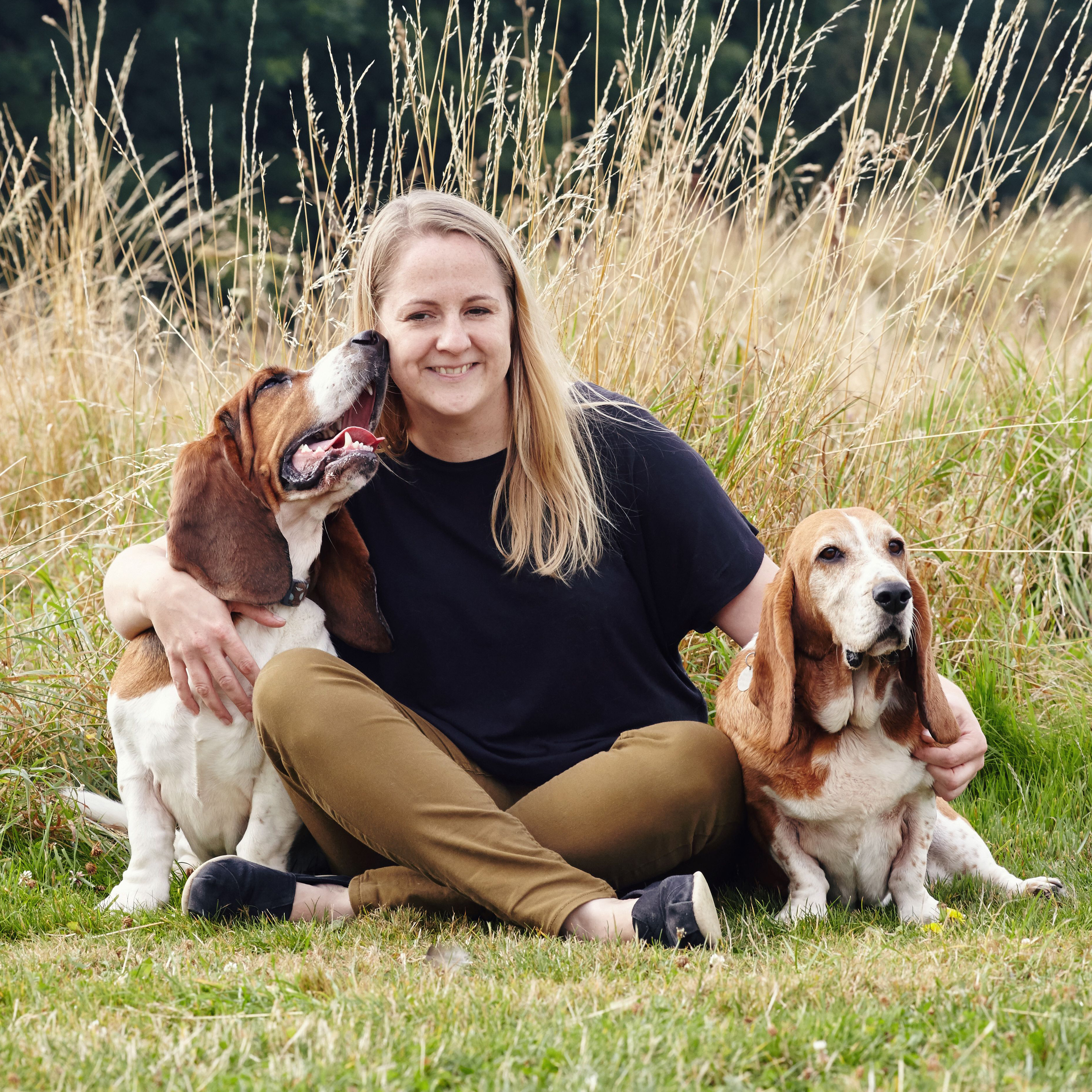
Caroline Wilkinson is a Certified Animal Behaviorist. She is a Full (assessed) Member of the APDT and INTODogs – as well as a Registered Training Instructor (ABTC). Caroline is also a Certified Real Dog Yoga Practitioner and an Applied Canine Zoopharmacognosist.
